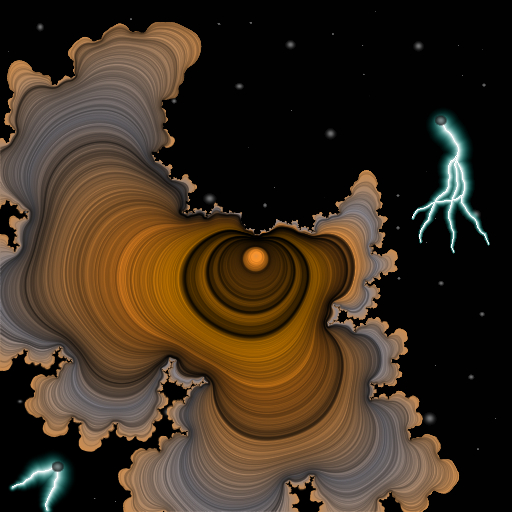Does time fly when you’re having fun? Have you wasted all your time? Are you losing time? Is it possible that you’ll never find the time again? Is time like sand in an hour-glass? Is time money?
It appears most of our expressions referring to time communicate that time is a commodity. But is this true? Is time anything at all? If we agree the clock is ticking, does it tick the same for you as it does for me? Are we all subject to the same time restrictions?
It turns out that the answer is “no.” Einstein’s theory of relativity explains how time passes more slowly for those moving at greater speeds, and more quickly at greater heights (people age faster living at the top story than the bottom. If there’s a message in any of this it is: move fast and stay low!)
What little we know about time raises some interesting questions.
Let’s say you carefully measure someone’s physiology—their breathing, heart rate, blood-pressure, etc.—and then ask them to view random photographs that might be expected to trigger a measurable emotional response. Dean Radin’s experiments demonstrate that people in fact responded in the expected emotional way—joy, sadness, fear—in response to certain images, but their response was documented prior to seeing the photographs!
Radin is not the only researcher who has seen some weird results. Dr. Dick Bierman reviewed the raw data in neuroscience experiments over many years and also found abundant evidence of backward time. Yes, you read that right. Backward time is being proposed by actual scientists, and no, they aren’t kidding.
Researcher Benjamin Libet conducted experiments on consciousness and decision-making in the 1980’s. He found that up to ten seconds before a test subject made a conscious decision, unconscious brain electrical activity was going on.
Libet’s results are used by materialists and folks with deterministic leanings to “prove” that free will does not exist: “This and other experiments prove the brain makes its own decisions on a subconscious level, and people only later feel ‘they’ have performed a conscious decision,” Dr. Robert Lanza explains. However, Libet believed there was the possibility of a “conscious veto”, an opportunity for free choice we could decide to take.
Consciousness expert Stuart Hameroff in an interview with Noetic Sciences in August 2010 clarifies: “Libet showed that the brain sends information—conscious information or conscious experience—backward in time…Roger Penrose was the first one I’m aware of to say, in his 1989 book [The Emperor’s New Mind], that this is perfectly allowable in quantum physics, because in quantum physics, when quantum collapse or quantum state reduction occurs, quantum information is sent both forward and backward in time.”
Julian Barbour from the University of Oxford in the UK, told Olivia Goldhill at Quartz that time begins at a central point and flows away in opposite directions. The central point is referred to as the “Janus Point”, named after the two-headed Roman god of gates and doors. Barbour explains:
“It’s the simplest thing, you start at that central Janus point where the motion is chaotic –that’s like the Greek notion of primordial chaos—but then in both directions you get this structure forming. If the theory is right, then there’s another universe on the other side of the big bang in which the direction of experience of time is opposite to ours.”
These two paths of time are being studied by Griffith University Associate Professor Joan Vaccaro. “Experiments on subatomic particles over the past 50 years show that nature doesn’t treat both directions of time equally. In particular, subatomic particles called K and B mesons behave slightly differently depending on the direction of time…while we are indeed moving forward in time, there is also always some movement backwards, a kind of jiggling effect, and it is this movement I want to measure using these K and B mesons.”

This backward time universe is called a “mirror” universe and it is based on principles of classical physics. The quantum interpretation could be even stranger, according to Barbour, “Instead of having two streams emanating from a river, it could be more like a fountain where you have lots of pairs of springs. Or just a whole host of springs flowing out of a fountain in different directions.” Professor Vaccaro may be studying a whole alphabet of mesons soon!
What does all of this mean? Experiments in quantum mechanics suggest that, “what you choose to do now, determines what happens in the past. The observers choice now creates the history, not the history creates the observer,” notes Henry Stapp, Phd in Discover Magazines June 2002 issue.
This is because the universe is polyhistoric, “The past involves a wide range of possible pasts all co-existing in a state of unmanifested potential. The act of observation collapses what is called the wavefunction (a mathematical construct that describes all of the system’s possible states) in such a way so as to evoke a particular universe in the present moment while simultaneously reaching backwards in time to create a history appropriate with our present moment experience. There is no way to say unambiguously what the past was really like until we know its future; as in a work of art, each part of the universe acquires its full meaning only in its relation to the whole,” according to writer Paul Levy.
If time is moving backward and forward, does that mean that light moves backward, too? Apparently so. In 2006 scientists at the University of Rochester published a paper describing how they sent light backward. And Live Science reported on April 19, 2016 that scientists manipulated light to apparently travel backward in time.
Time reversal, as it is called, “Could allow researchers to develop ultra-high-speed cameras that can peer around corners and see through walls…normally, light travels so fast that, to the human eye, the light coming from many different locations seems to appear instantaneously, making it impossible for the eye to resolve these different light paths and “see” behind corners. But because high-speed cameras can capture the light in motion, researchers can reconstruct the shape of objects that might not be in the immediate line of sight.”

Scientists agree that the speed of light is constant at 186,000 miles per hour. The distance light travels depends on our perspective as the observer. The time it takes for light to hit you or me is equal to the distance it travels divided by the speed of light, and that distance might not be the same for us both. Just as time speeds up when we live at the top of a building, and slows down when we take a rocket ship ride, it depends on where you are! Einstein convinced us to abandon the idea of absolute time. Time is relative.
Does this mean time travel as we imagine it in science fiction novels could be possible? Some scientists would say that time travel is already a part of our daily life! When you look out at the stars shining above you at night, you are looking into the past. The light that hit your eyes left that star more than eight minutes ago!
In the transactional interpretation of quantum mechanics, John Cramer proposes that a kind of “handshake” occurs between the emitter of the light and the absorber of the light. It takes about 8 minutes before a photon emitted from the sun is absorbed by something on earth, “the absorber on earth sends a reverse signal to the emitter on the sun 8 minutes before the photon from the sun strikes the absorber.” This is discussed in some detail in Open Science blog’s article, Open Question: Can Causation Work from the Future?
Since The Time Machine was published by H.G. Wells in 1895, our media—books, films, and games—have been filled with the titillating idea of time travel and its implications. One concerning implication is that returning to the past might alter the present. But this hasn’t stopped scientists from searching for the secret of time travel! And scientists have, in fact, successfully sent photons back in time.
Researchers Gary Horowitz and Juan Maldacena may have discovered the secret to time travel in their (hypothetical) attempt to escape from a black hole. Seth Lloyd of Nova explains:
“To escape from a black hole, you must effectively travel faster than the speed of light. But as everyone knows, if you can travel faster than the speed of light, you can also go backwards in time. Although it sounds like science fiction, time travel is actually allowed in Einstein’s theory of general relativity: space times can possess closed timelike curves which you can enter in the future and exit in the past. In 2009, my colleagues and I showed that the quantum mechanics of closed timelike curves was essentially the same as that of teleportation and escape from black holes,”
“Like escape from a black hole, travel through a closed timelike curve is based on teleportation—in this case, teleportation from the future to the past… As you enter the curve, you disappear from view of observers in the “normal” spacetime outside the entrance. So far as they are concerned, you are disappearing into nothingness. In our model, as you disappear, the closed timelike curve effectively performs a measurement on you along with curve’s analog of Hawking radiation, called horizon radiation. Just as the effect of the measurement at the singularity of a black hole causes you to reappear outside the hole, the effect of the measurement at the entrance to the closed timelike curve causes you to reappear at the exit to the curve in the past.”
(You can learn more about teleporting and time travel in the PBS NOVA blog: Trap Doors in Time and Space: Teleportation, Time Travel, and Escape from Black Holes.)
Some scientists believe that quantum entanglement may be involved in our perception of time and the possibility of time travel. Once a wave becomes a definite particle, then that particle becomes entangled with everything else in its environment. That is why time travel on a teeny-tiny scale might be achievable, but with many particles, like a human being, for example, there are too many entanglements already in place and each one must be reversed in order for backward time to occur.
This roadblock is not stopping Tesla Motors from trying to teleport a car, and teleportation is based on the same principle. Since scientists have been teleporting atoms for decades, perhaps it is not such a leap to consider teleporting a car.
It is a leap of faith to consider the possibility of backward time, teleporting cars, or mirror universes. So, let me scrape you down from the ceiling and take a minute to “ground” quantum mechanics in your daily life. The products of quantum mechanics are all around us—things we touch and hold and that have changed the way we communicate, treat illness, and much more.
Do you use a cell phone or tablet? Quantum mechanics made those devices possible. Quantum mechanics begat semi-conductor devices, which begat miniaturized electronics (including computers), medical devices, lasers, and blue-ray players to name just a few. I wonder what new devices are coming. Are we going to have hand-held teleporters and end global warming by removing any need for cars? How cool would that be?
As we begin to understand the new realities presented by quantum mechanics our view of what is “real” is bound to change, as are the tools we use and the toys we play with. Even if our efforts to harness “backward time” are ineffective, you know that when you focus your attention on the past, it may lead to more of the same. When you focus your attention on the future, it may keep you stuck in micro-managing the details of your life rather than being present for emerging experiences. Focusing on now—the only time we can currently control, and perhaps the only time that is real—is where it’s at.







+ There are no comments
Add yours